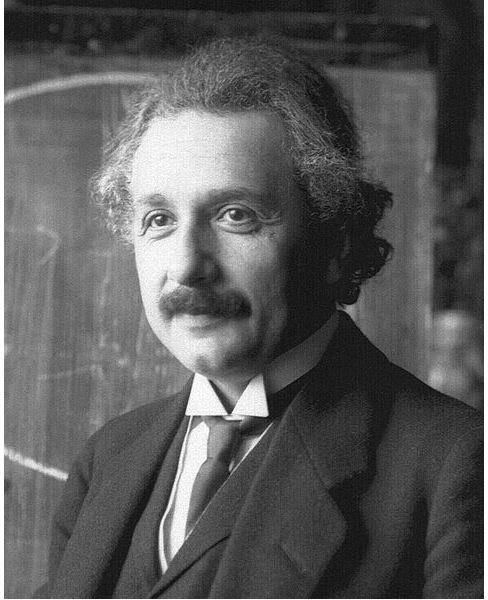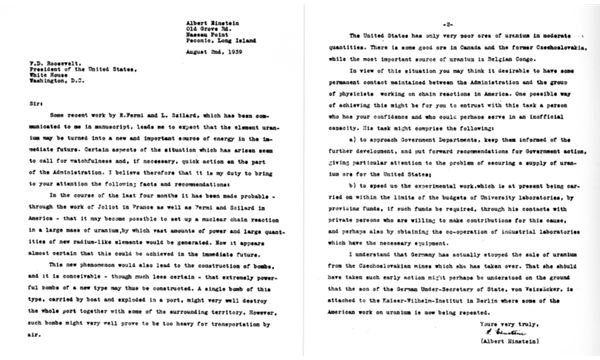Interesting Facts on Albert Einstein's Life, Achievements, and Contributions to the Field of Physics
Basic Albert Einstein Facts
Birth: March 14, 1879
Birth Place: Ulm, Kingdom of Wurttemberg in Germany
Religion/Ethnicity: Ashkenazi Jewish
Field: Physics
Schooling and College years: Attended the Catholic Elementary School in Munich, in his teens he attended the Luitpold Gymnasium. Graduated from the Polytechnic Academy in Zurich, Switzerland in 1900 with a diploma in physics and mathematics.
Key Achievements: Special relativity, General relativity, Photoelectric effect, Brownian motion, Bose-Einstein Statistics.
Notable Honors: Nobel Prize in Physics awarded in 1921, The Copley medal in 1925 for his contributions to quantum theory and for his theory of relativity, the Max Planck medal in 1929 for his achievements in Physics.
Death: 18 April, 1955 of an abdominal aortic aneurysm. at the age of 76, in Princeton, New Jersey, USA
Notable Achievements in the Field of Physics, Mathematics and Astronomy

Here are some Interesting facts about Albert Einstein and his notable contributions in the field of physics and astronomy:
• Albert Einstein was a genius in physics and mathematics. He published his first scientific work “The Investigation of the State of Aether in Magnetic Fields" in 1894, when he was just 15 years old.
• Einstein totally dismissed the “Old Physics” which believed in an absolute space and time and that the speed of light was relative. He envisaged a universe where the speed of light is absolute and space and time are relative.
• Einstein was honored with the Nobel Prize in Physics in the year 1921 for his discovery of the law of the Photoelectric effect and his services for theoretical physics.
• In 1905, he published four research papers, the special theory of relativity, the Brownian motion theory, the photon theory of light, and the equivalence of mass and energy. The basis of special theory of relativity is that the velocity of light was absolute, albeit, all other velocities are relative.
• Exactly ten years later in 1915, Einstein published a research paper called “general relativity”. This theory gives the current meaning

of gravitation in modern physics. The research paper explained gravity as a property of space-time. The general theory of relativity unifies Newton’s law of gravity and special relativity. The theory produced some of the greatest and strangest results in modern astronomy.
•In 1916, Einstein introduced the notion of dark energy. He called it the “energy of nothing”, which was Einstein’s cosmological constant, and was added to his general theory of relativity. However, he later refuted his own idea by calling it his greatest blunder.“But, his great blunder holds the destiny of universe” says Michio Kaku, author of Parallel Worlds. According to Alexey Vikhlinin, lead researcher in the Smithsonian Astrophysical Observatory in Cambridge, Massachusetts, “dark energy is the cosmological constant, or in simple terms: ‘nothing weighs something’. Modern cosmologists estimate that almost 70 percent of universe is dark energy, five percent ordinary matter and 25 percent dark matter. (Sources: Sciencentral.com* and Wired.com*).
• In 1905 he published the paper on mass-energy equivalence, which gave twentieth century’s most famous equation E=MC2. The equation means that small amounts of mass could be converted into huge amounts of energy. It was the basis of development of nuclear power.
• Einstein did not believe in the wave theory of light. He focused more on the particle theory of light and believed that light is a collection of particles, not waves.
• Much of his later life was spent in search for a unified field theory, but he was unsuccessful in providing substantial evidence on it.
• He showed us how to calculate the Avogadro’s number and the size of molecules.
Interesting and Fun Facts About Albert Einstein
Albert Einstein’s popular phrase “The important thing is to not stop questioning” reflected his never-ending questioning attitude and curiosity. This attitude earned him a Nobel Prize. Here are some more amazing facts about Albert Einstein:
• Albert Einstein showed speech impairments until the age of nine. Young Einstein found difficulty in conversing with people and always muttered silently, framing sentences in his mind until he finally spoke them aloud after getting them right. He always had problems with spelling. The headmaster of the school suggested that Einstein should attend a trade school. His teachers also declared him as borderline retarded!
• After graduating from college, Einstein failed to find a job related to his field, physics. He became a technical assistant in a Swiss patent office. However, he never stopped his research on theoretical physics and continued to work on it in his spare time.
• Albert Einstein was never awarded a Nobel Prize for his theory of relativity. Even today it is still in use - read about how GPS systems use the theory of relativity for accuracy.
• Einstein gave an application to attend an early entrance examination into the Swiss Federal Polytechnic School in 1895. He was only seventeen at that time. He failed in all other subjects except the math and science sections of the entrance exams. He had to retake the exam and was finally admitted to Polytechnic School.

• The Einstein-Szilard letter, signed by Albert Einstein, (written Leo Szilard) was sent to United States President, Franklin D. Roosevelt on August 2. 1939. The letter warned Roosevelt of a possible Nazi Germany research on nuclear fission to create atomic bombs. This letter was seen as the main reason for the Manhattan Project**, a nuclear weapons project which developed the atomic bombs dropped on Hiroshima and Nagasaki in 1945.
• Albert Einstein’s brain has always been a subject of conjectures and research. His brain was removed by the pathologist Thomas Stoltz Harvey while performing Einstein’s autopsy. When scientists conducted a study on his brain structure, they found that the inferior parietal lobe of his brain was 15 percent wider than the parietal lobe of an average human being. This region is specifically associated with mathematical thought, imagery of movement and visuospatial recognition.
References
-
“Einstein to Roosevelt, August 2, 1939.” Dannen, http://www.dannen.com/ae-fdr.html
-
“Albert Einstein Anecdotes and Timeline.” Oaks http://oaks.nvg.org/sa5ra17.html
-
**”Manhattan Project.” http://en.wikipedia.org/wiki/Manhattan_Project
-
“The Long, Strange Journey of Einstein’s Brain.” NPR, http://www.npr.org/templates/story/story.php?storyId=4602913
“Why Size Mattered for Einstein.” BBC http://news.bbc.co.uk/2/hi/science/nature/371698.stm
Hotz, Robert. “Revealing Thoughts on Gender and Brain”
-
Albert Einstein, http://en.wikipedia.org/wiki/Albert_Einstein
-
*“Space Energy.” Sciencentral, http://www.sciencentral.com/articles/view.php3?article_id=218392604
-
*Madrigal, Alexis. ”Dark Energy Could Be Einstein’s Cosmological Constant” http://www.wired.com/wiredscience/2008/12/dark-energy-ein/
-
“Einstein Achievements.” Bibalex, http://www.bibalex.org/Einstein2005/Achievements.htm
-
Image Credit: Letter Sent to US President Franklin D. Roosevelt on August 2, 1939 Under Public Domain [http://en.wikipedia.org/wiki/File:Einstein-Roosevelt-letter.png](/tools/Image Credit: Letter Sent to US President Franklin D. Roosevelt on August 2, 1939 Under Public Domain http:/en.wikipedia.org/wiki/File:Einstein-Roosevelt-letter.png)
-
Image Credit: Photograph of the young Albert Einstein, Under Public Domain courtesy: http://en.wikipedia.org/wiki/File:Albert_Einstein_as_a_child.jpg
-
Image Credit: A photograph of the 42-year old Einstein, photograph by Ferdinand Schmutzer (1870-1928), Under Public Domain courtesy:http://en.wikipedia.org/wiki/File:Einstein1921_by_F_Schmutzer_4.jpg
-
Image Credit: Photograph of Albert Einstein, Credit: Oren Jack Turner, Princeton, N.J., Under Public Domain [http://en.wikipedia.org/wiki/File:Albert_Einstein_Head_Cleaned_N_Cropped.jpg](/tools/Photograph of Albert Einstein, Credit: Oren Jack Turner, Princeton, N.J., Under Public Domain http:/en.wikipedia.org/wiki/File:Albert_Einstein_Head_Cleaned_N_Cropped.jpg)
